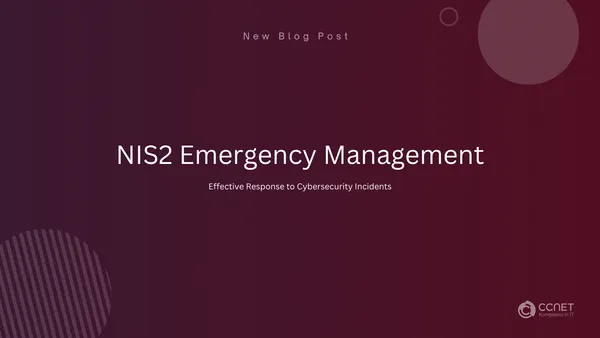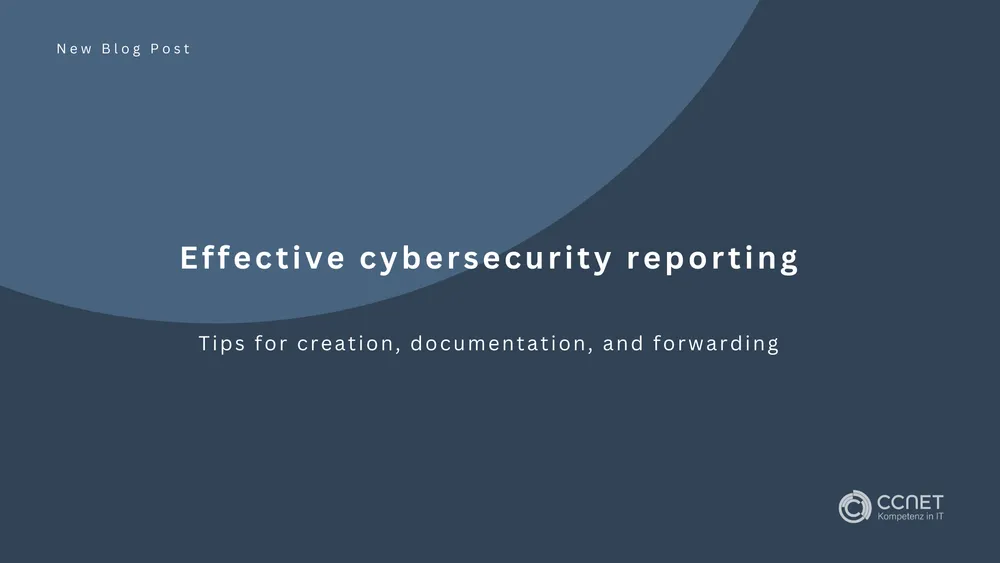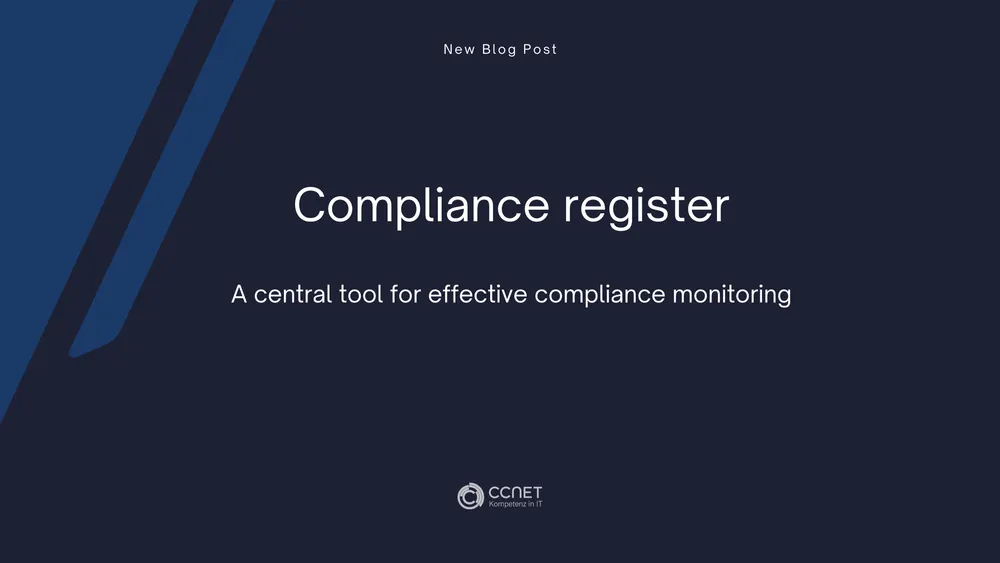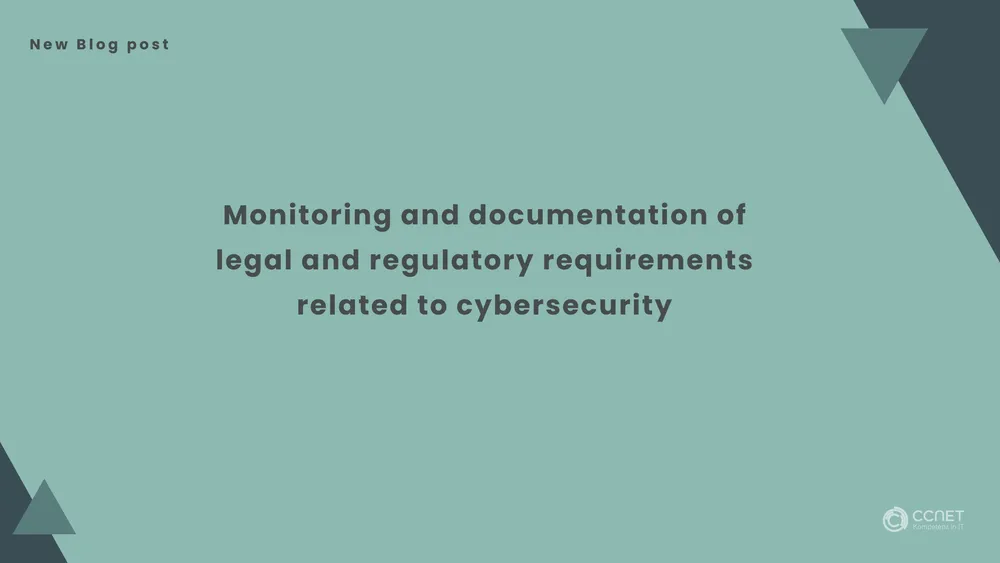
CCNet
Jan 20, 2025 • 3 min read

NIS2 Emergency Management: Effective Response to Cybersecurity Incidents
NIS2 Emergency Management: Effective Response to Cybersecurity Incidents
An efficient emergency management process is crucial for preparing companies for potential cyberattacks and ensuring a quick and coordinated response. A comprehensive emergency plan outlines clear procedures for communication, containment, remediation, and recovery following an incident.
Objective
This process aims to ensure a quick and effective response in the event of a cybersecurity incident. A clear, documented emergency plan describes the necessary steps for internal and external communication, incident remediation, and the resumption of normal operations. The plan is tested annually to ensure its effectiveness.
Scope
All IT systems, applications, and databases, as well as all involved employees of the company, are included in this process. The emergency plan covers a variety of incidents, including data breaches, ransomware attacks, DDoS attacks, and insider threats.
Core Components of the Emergency Plan
- Incident Response Team (IRT): A specially trained team activated in the event of an incident, coordinating all containment, remediation, and recovery measures.
- Communication Plan: A detailed procedure for quickly informing all relevant stakeholders during and after an incident.
- Remediation Strategy: A process for identifying, isolating, and neutralizing threats to prevent further damage.
- Recovery Plan: Measures to quickly restore business processes after an incident and ensure the resumption of normal operations.
- Documentation: Comprehensive recording of all activities, decisions, and actions during the incident, as well as the creation of a final report.
Process Flow and Procedures
Create and Update the Emergency Plan
The IT security team is responsible for developing and maintaining a comprehensive emergency plan, which is regularly reviewed and updated. The plan outlines the procedures for various types of incidents and defines the responsibilities of the Incident Response Team.
Activate the Incident Response Team
In the event of a security incident, the Incident Response Team is immediately activated. This team coordinates all necessary steps, including incident containment, remediation, and the initiation of recovery measures.
Communication During the Incident
Clear and timely communication is essential. The communication plan is activated to ensure that all relevant stakeholders – employees, customers, partners, and authorities – are informed and receive accurate information about the incident.
Incident Remediation
The Incident Response Team analyzes the cause of the incident, takes containment measures, and works on a quick remediation. These measures include isolating affected systems, removing malware, and restoring backups to ensure data integrity.
Recovery of Business Processes
Once the immediate threat has been neutralized, the recovery plan is implemented. The IT team checks the integrity of the affected systems and ensures that business processes are quickly resumed.
Documentation and Follow-Up
All activities and decisions are carefully documented to maintain process transparency. A final report documents the course of the incident, the measures taken, and provides recommendations for future improvements. This report is submitted to management.
Regular Testing of the Emergency Plan
An annual test of the emergency plan – in the form of a simulation or practical test – ensures the effectiveness of the plan. Weaknesses are identified, and the plan is continuously improved.
Roles and Responsibilities
- IT Security Officer: Responsible for creating and updating the emergency plan, coordinating the Incident Response Team, and managing emergency communication.
- Incident Response Team: Responsible for quickly responding to, containing, and remediating threats, as well as restoring business processes.
- Communication Manager: Coordinates internal and external communication during the incident.
- Management: Oversees the process, approves the emergency plan, and ensures the necessary resources are available.
Reporting
A detailed final report on each incident, as well as the test results of the annual emergency plan, are presented to management. These reports include an analysis of the response, the effectiveness of the measures, and recommendations for future improvements.
Continuous Improvement
The emergency plan is regularly reviewed and adjusted based on lessons learned from incidents and test results. This ensures that the plan remains aligned with current threats and company requirements.
Conclusion
A well-structured and regularly tested emergency plan is essential for any company to be able to respond effectively to cybersecurity incidents. The clear division of roles and responsibilities, a structured communication plan and consistent documentation ensure that incidents can be quickly identified and dealt with in a targeted manner. This minimizes potential damage and supports the rapid recovery of business processes. The continuous improvement of the plan based on current threats and empirical values enables the company to stay up to date at all times and be prepared for all eventualities.


